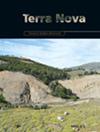Constraining the diagenesis of the Puga cap carbonate from U–Pb in‐situ dating of seafloor crystal fans, southern Amazonian craton, Brazil
IF 1.7
3区 地球科学
Q2 GEOSCIENCES, MULTIDISCIPLINARY
引用次数: 1
Abstract
Cap carbonates overlying Marinoan (635 Ma) glacial deposits worldwide record extreme paleoceanographic changes that may have triggered the rise of macroscopic life. However, the lack of geochronological constraints on these successions hinders reconciling climate and environmental change. Their upper part is marked by anomalous aragonite precipitation associated with large transgression and oxygenation of the post‐glacial ocean. Neomorphism of these deposits to low‐Mg calcite often includes centimetre‐scale seafloor crystal fans. We used in‐situ U–Pb dating and C and Sr isotopic analyses in the Puga cap carbonate to estimate the nature and timing of the neomorphism process. An age of 623 ± 3 [9] Ma (δ13C ~ −6‰ and 87Sr/87Sr ~ 0.7071–0.7075) for a blocky calcite cement is consistent with solution‐reprecipitation within the fans during final filling and diagenetic stabilization of the cap carbonate fabric. This result improves previous cap carbonate direct dating, providing a rare Lower Ediacaran chronostratigraphic reference.巴西亚马逊克拉通南部海底结晶扇的U–Pb原位测年限制Puga盖层碳酸盐岩的成岩作用
Marinoan上覆的盖层碳酸盐岩(635 马)冰川沉积物记录了可能引发宏观生命兴起的极端古海洋变化。然而,这些演替缺乏地质年代限制,阻碍了气候和环境变化的协调。它们的上部以异常霰石沉淀为标志,与冰川后海洋的大型海侵和氧化作用有关。这些矿床向低镁方解石的新生变形通常包括厘米级海底结晶扇。我们在Puga盖层碳酸盐岩中使用了原位U–Pb定年以及C和Sr同位素分析来估计新生变形过程的性质和时间。623岁 ± 3[9]Ma(δ13C ~ −6‰和87Sr/87Sr ~ 0.7071–0.7075)与盖层碳酸盐岩组构的最终填充和成岩稳定过程中扇体内的溶液再沉淀一致。这一结果改进了以往盖层碳酸盐岩的直接测年,提供了一个罕见的下埃迪卡拉纪年代地层参考。
本文章由计算机程序翻译,如有差异,请以英文原文为准。
求助全文
约1分钟内获得全文
求助全文
来源期刊

Terra Nova
地学-地球科学综合
CiteScore
4.80
自引率
8.30%
发文量
59
审稿时长
2.3 months
期刊介绍:
Terra Nova publishes short, innovative and provocative papers of interest to a wide readership and covering the broadest spectrum of the Solid Earth and Planetary Sciences. Terra Nova encompasses geology, geophysics and geochemistry, and extends to the fluid envelopes (atmosphere, ocean, environment) whenever coupling with the Solid Earth is involved.
 求助内容:
求助内容: 应助结果提醒方式:
应助结果提醒方式:


